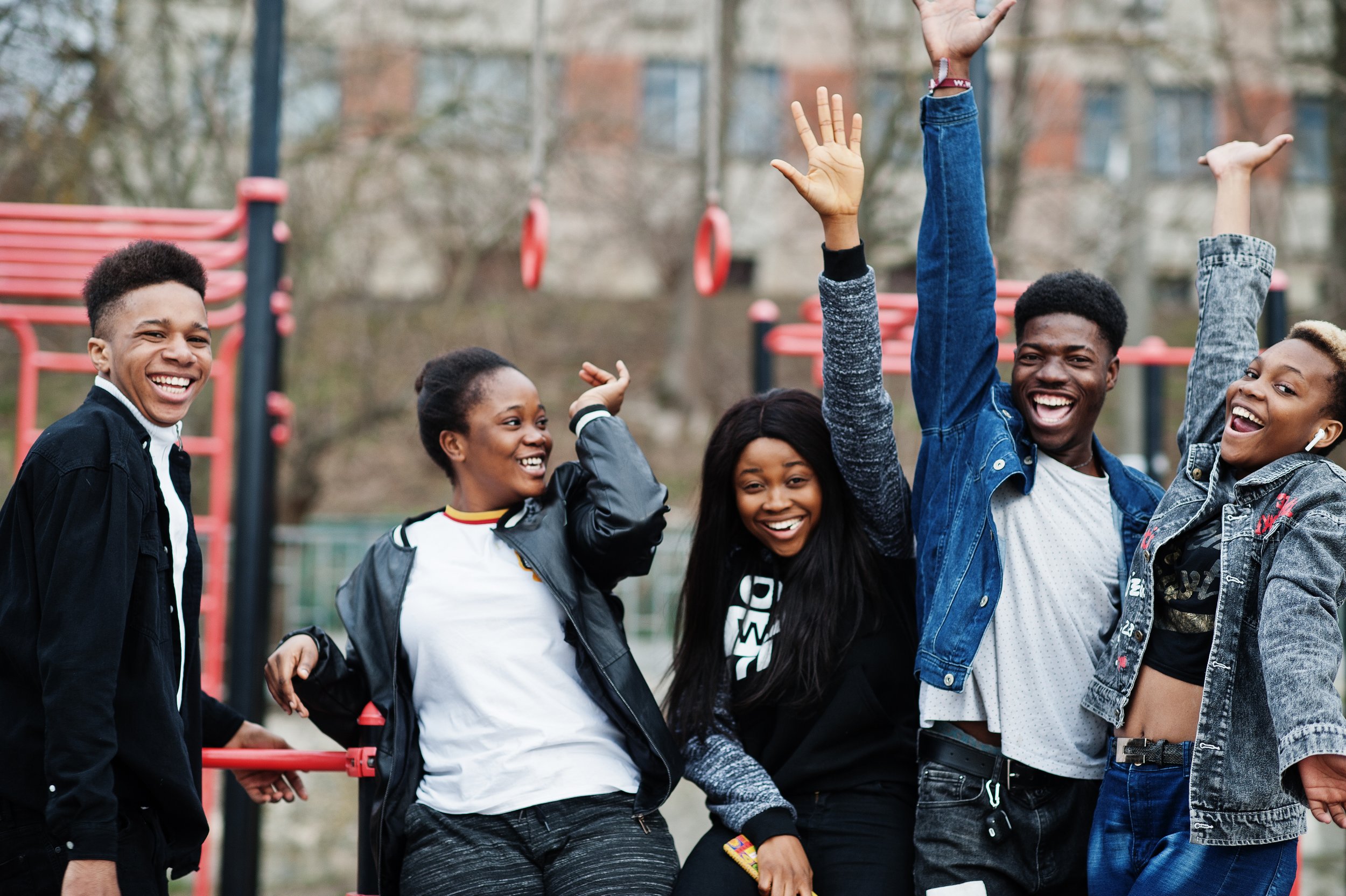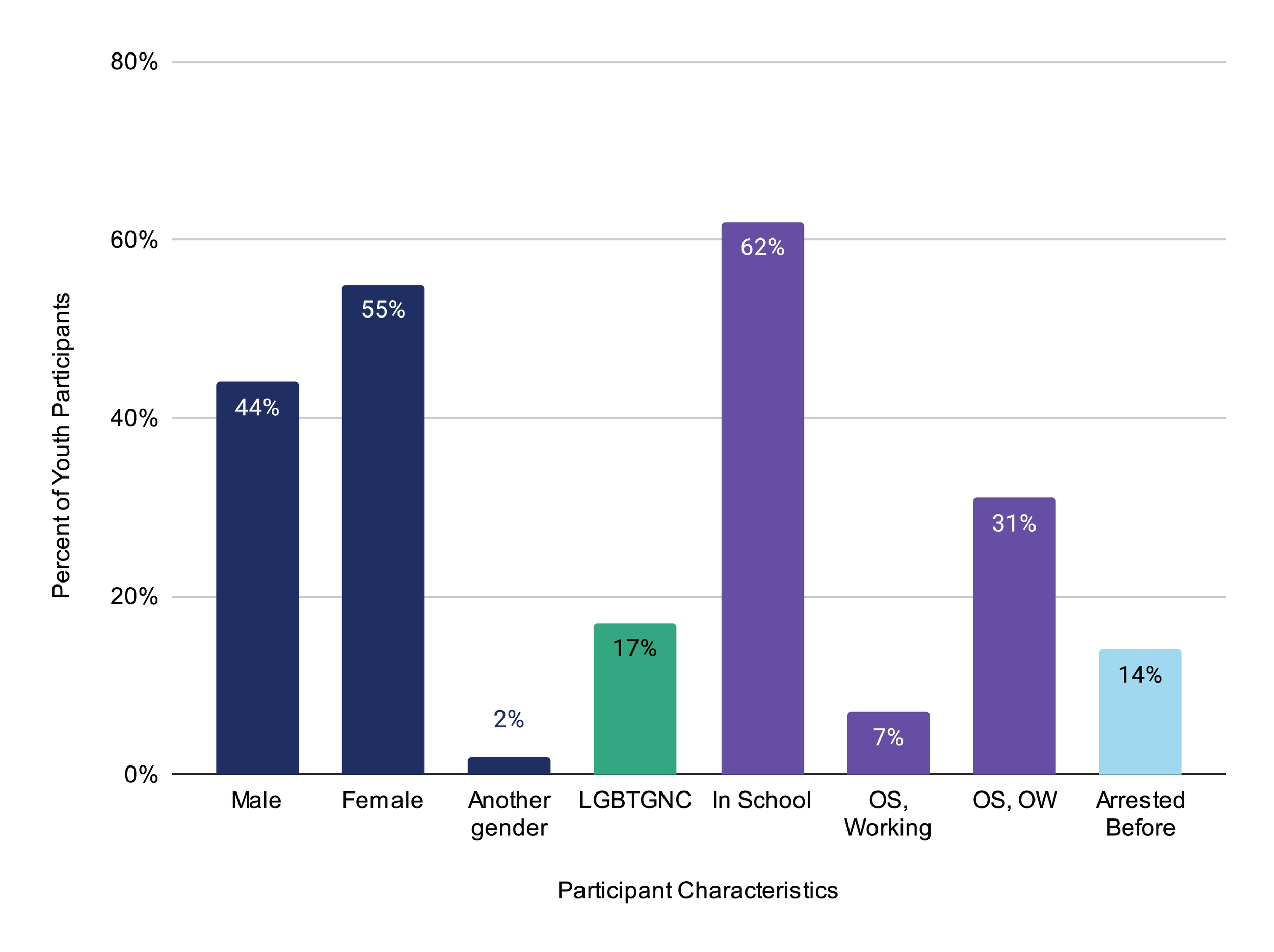Improving Youth Services & Supporting Goals: The Youth Opportunity Hub Initiative
By Brandon Martinez, Research Associate
A recent evaluation of the Youth Opportunity Hub initiative shows how five lead organizations improved access to youth services and enhanced community safety. Hubs created safe spaces for youth to receive holistic services that allowed them to meet their legal and health needs, while modeling positive relationships with its participants.
An innovative model for providing youth services opened doors for young people in New York City by creating safe, supportive physical spaces in their communities. Connecting youth to wraparound services has been shown to improve youth development and reduce the likelihood that young people interact with the criminal legal system and thus, improve safety in communities. The Youth Opportunity Hub (YOH) initiative funded five lead organizations in Manhattan — Henry Street Settlement, Union Settlement, The Door, Living Redemption, and New York-Presbyterian — and their many organizational partners to provide wraparound services to young people. Funded by the Criminal Justice Investment Initiative (CJII) to improve safety in neighborhoods that have experienced disproportionate impacts of divestment and criminal legal system involvement, the Hubs connected a diverse population of youth to wraparound services that addressed their material, social, educational, and physical and mental health needs.
Recent findings from an evaluation of the initiative, conducted by Westat and Metis, show just how the Hubs were able to work with more than 15,000 young people from 2017 to 2022. Hubs were able to do this by tailoring services to participants’ diverse needs and helping them set and achieve goals. Hubs created positive and supportive environments by developing safe and welcoming spaces in communities and breaking down service silos to increase access (i.e., making sure that participants could access all types of services needed through the Hubs). More information on the development of Hubs’ organizational networks and the initiative’s impact at the organizational level can be found here.
Serving Youth with Diverse Needs
One of the initiative’s major successes was serving a diverse population of young people who had many different needs and goals. Each of the five Hubs served a population that closely mirrored the neighborhoods in which they were located, and tailored their offerings to meet that population’s needs. Overall, Black and Latine youth accounted for 80 percent of Hub participants, and nearly one in five participants were LGBTGNC (Figures 1 and 2). Although most participants were enrolled in school, nearly one-third were out of school and out of work at the time of initial program engagement. Furthermore, nearly one in seven had been previously arrested.
figure 1. race-ethnicity of yoh participants
Source: ISLG aggregated data, July 2017 - December 2022, N = 15,239
figure 2. characteristics of yoh participants
Source: ISLG aggregated data, July 2017 - December 2022, N = 15,239
Youth came to the Hubs for many different reasons. These included securing employment, educational support, and housing — reflecting the importance of providing material support (Figure 3). Many others also sought mental health treatment and legal/counseling help with criminal legal system challenges — highlighting the need for providing comprehensive wraparound services to address the diverse needs of young people.
figure 3. selected goals of yoh participants
Source: Youth Survey Wave 1, N = 136
Helping Youth Set and Meet Goals
Although most youth participants across the Hubs had never been directly involved with the criminal legal system, nearly half of the evaluation survey respondents had a goal to stay out of trouble with the law. Among those youth, 91 percent successfully avoided becoming involved with the criminal legal system, and most (89 percent) claimed that the Hubs helped them achieve their goal (Figure 4).
figure 4. criminal legal system involvement
Source: Youth Survey Wave 1, N = 136
Hub staff attribute their successes to a holistic approach to support youth. Hubs addressed community violence and de-escalated conflicts with Credible Messengers, addressed basic material needs, connected youth to mental health services, and created environments where youth could develop decision making skills, create support networks, and engage in enriching prosocial activities.
A similar percentage of Hubs participants identified obtaining mental health and substance abuse treatment as a goal upon joining a Hub. Two-thirds reported achieving their goals, and nearly all (91 percent) said that the Hub helped them (Figure 5). Youth were able to access more mental health services by participating in the Hubs because the partnership models of the initiative created multiple entry points for services and connected them to partner organizations. Hub staff also worked to destigmatize mental health supports among participants and the community. With increased access to services, and safe spaces in Hubs, youth could more easily meet their mental health needs.
“I don’t know what would have happened to me after turning 21 without [my social worker], because I don’t know exactly how to get a psychologist or a mental health counselor. I didn’t know what it was going to cover, my insurance, and stuff like that.”
- Hub Participant
figure 5. mental health and substance abuse
Source: Youth Survey Wave 1, N=136
Beyond individual goals, youth generally felt satisfied with joining the Hubs (Figure 6). Nearly all survey respondents would recommend Hub programming to a family or friend (90 percent) and were confident in Hub staff’s ability to help them address their needs and achieve their goals (90 percent). Youth satisfaction with the Hub experience can be attributed in part to the program's ability to increase access to services, create safe spaces in communities, and develop positive relationships
figure 6. Youth satisfaction with hub experience
Source: Youth Survey Wave 1, N = 136
Creating Safe Spaces
The Hubs supported youth goals while actively creating safe spaces for participants and safer environments within communities. Hubs created safe spaces both by making sure staff created a safe and welcoming environment for young people, and by using capital improvement funds to develop programmatic spaces where partners could be collocated. As quoted below, one participant found the Hub to be a safe space in their community where they could learn and participate in activities not available elsewhere.
“I was living in a [housing] project. It was just a lot. And you know, The Hub was like a way to like stay out of those troubles to have a safe place where we can go, where we can learn things and be in stuff.”
- Hub Participant
About the Program and Evaluation
The Youth Opportunity Hubs helped youth meet their basic needs, provided wraparound youth services, supported young people’s positive development and provided them with supportive relationships, and provided them with a greater sense of belonging and hope in their lives and communities. As a result, the YOH initiative has helped provide alternatives to the criminal legal system and made communities safer.
The final evaluation report, including process, outcome, and cost-study findings, as well as a policy brief on evaluation findings, is available here. An earlier mid-evaluation report describing process evaluation findings in greater depth is available here.
About the Criminal Justice Investment Initiative
The Manhattan District Attorney’s Criminal Justice Investment Initiative (CJII) focuses on three investment areas—crime prevention, reentry and diversion, and supports for survivors of crime. The Youth Opportunity Hubs are part of the CJII’s crime prevention-focused investments in Youth, Families, and Communities.
The CUNY Institute for State and Local Governance manages and provides technical assistance to CJII contractors, and conducts oversight and performance measurement throughout the lifetime of the initiative.







